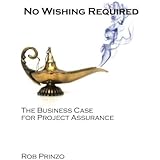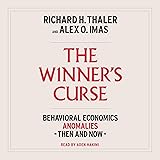In an era characterized by shifting economic tides and unpredictable market currents, many discerning investors find themselves drawn to the steadfast beacon of gold. This timeless allure often stems from a fundamental desire to preserve wealth and secure a tangible asset against the abstract nature of modern finance. As the insightful video above elucidates, the journey to intelligently invest in gold, particularly heading into 2025, requires a nuanced understanding of its various forms and inherent value propositions. The direct approach presented in the video serves as an excellent primer, advocating for a focus on tangible assets rather than purely speculative paper derivatives.
The Timeless Allure of Gold Investment in 2025
For centuries, gold has occupied a unique position in global finance, transcending its role as mere ornamentation to become a bedrock of economic stability. Its intrinsic value is not predicated on the performance of any single corporation or governmental entity; rather, it is derived from its rarity, durability, and universal acceptance. Consequently, gold frequently functions as a powerful hedge against inflation, safeguarding purchasing power when fiat currencies inevitably lose their lustre over time. Astute investors recognize gold as a portfolio diversifier, offering a counter-cyclical performance that often thrives during periods of economic uncertainty and market volatility, effectively acting as an anchor in tempestuous financial seas.
The economic landscape of 2025, with its potential for continued geopolitical shifts and evolving monetary policies, further underscores gold’s enduring appeal. Unlike many modern financial instruments, gold carries no counterparty risk, meaning its value is not contingent upon the solvency or performance of another entity. This characteristic is particularly appealing to those seeking true autonomy over their assets. Furthermore, its historical track record as a store of value, surviving countless empires and financial crises, speaks volumes about its resilience and reliability within a diversified investment portfolio.
Navigating Gold Investment Options: Physical vs. Digital Assets
As the video succinctly points out, the modern investor has multiple avenues for gaining exposure to gold, each presenting its own set of advantages and considerations. While exchange-traded funds (ETFs) and other paper-based instruments offer accessibility and liquidity, they fundamentally deviate from the primary rationale for gold investment: direct ownership of a tangible asset. Understanding this critical distinction is paramount for crafting an effective gold strategy.
The Case for Tangible Gold: Coins and Bullion
When the objective is genuine wealth preservation and insulation from systemic risks, physical gold – in the form of coins or bullion – stands as the unequivocal choice. This approach provides investors with direct control over their assets, eliminating the counterparty risks associated with paper claims or derivatives. Popular forms include gold bars (bullion) of varying weights, as well as sovereign gold coins such as American Gold Eagles, Canadian Gold Maples, or South African Krugerrands, which often carry legal tender status. While requiring secure storage solutions, such as home safes or professional vaulting services, the peace of mind derived from physical possession is often considered an invaluable premium by serious investors.
Purchasing physical gold, however, necessitates a careful evaluation of the bid-ask spread and premium over the spot price, which covers manufacturing, distribution, and dealer margins. Nonetheless, for those prioritizing ultimate control and direct ownership, the process of acquiring physical gold bullion or investment-grade coins represents the most direct and unadulterated form of investing in gold. This method aligns perfectly with the foundational principle of a “no-nonsense” approach, focusing on the core asset rather than its financialized representations.
Exploring Gold ETFs and Futures Markets
In contrast to physical holdings, gold ETFs (Exchange Traded Funds) and futures contracts offer a different investment proposition. Gold ETFs track the price of gold and are traded like stocks on major exchanges, providing excellent liquidity and ease of transaction. They are ideal for investors who seek price exposure without the logistical challenges of storing physical metal, and for those who wish to engage in short-term speculation. However, it is crucial to recognize that an ETF share typically represents a claim on gold held by a custodian, not direct ownership of the physical metal itself, introducing an element of counterparty risk.
Futures markets allow investors to speculate on the future price of gold with significant leverage, but this amplified potential for gains comes hand-in-hand with equally magnified risks. These instruments are generally more suited for experienced traders rather than long-term investors focused on asset preservation. While these paper assets serve a valid purpose within diverse portfolios, they fundamentally diverge from the tactile security offered by tangible gold, which is often the primary driver for those seeking to effectively invest in gold for generational wealth.
The Nuances of Gold Jewelry as an Investment Asset
The concept of gold jewelry as an investment asset is often misunderstood, conflating its aesthetic appeal with its underlying material value. As the video thoughtfully highlights, it is indeed possible to approach gold jewelry with an investment-minded perspective, but this requires a discerning eye and a rigorous focus on specific criteria. The key lies in separating the intrinsic value of the gold content from the artistic or labor-intensive aspects of the piece’s creation, which typically command a significant premium.
Prioritizing Purity: Understanding Karats and Intrinsic Value
When evaluating gold jewelry for its investment potential, the purity of the gold is the paramount consideration. Gold purity is measured in karats (K), with 24K representing 99.9% pure gold, often considered the benchmark for investment-grade bullion. Jewelry, however, commonly uses alloys to enhance durability and specific hues, resulting in lower purities like 22K (91.6% gold), 18K (75% gold), 14K (58.3% gold), or even 10K (41.7% gold). The lower the karat number, the less actual gold the piece contains, and consequently, the less intrinsic value it possesses as an investment.
Therefore, to maximize the investment aspect of gold jewelry, one should always seek the highest possible karatage. A 24K gold coin, for instance, represents pure gold, whereas a 14K necklace inherently carries a significantly lower proportion of the precious metal. Understanding this fundamental principle allows investors to calculate the actual gold weight and purity, separating it from the subjective value of design or brand. Tools like the Coinflation app, mentioned in the video, become invaluable resources for quickly assessing the melt value of a gold item based on its weight and purity against the current spot price.
Deconstructing Labor Costs: The Art vs. the Asset
Beyond purity, the most significant differentiator between investment-grade gold and conventional gold jewelry is the labor cost component. Every piece of jewelry, beyond its raw material, carries the cost of design, craftsmanship, and branding. Intricately designed pieces, bespoke creations, or items from luxury brands command substantial premiums for the artistry and labor involved in their creation. While these pieces certainly hold aesthetic and emotional value, this added cost typically does not translate into increased investment value when it comes time to sell.
Conversely, simpler designs, such as classic gold chains (e.g., Cuban link, Figaro) or plain gold bands, tend to have lower labor costs relative to their gold content. Coin jewelry, where a gold coin is set into a bezel with minimal additional gold work, also represents a more investment-centric approach, as the bulk of its value is tied directly to the coin’s intrinsic gold weight. By minimizing the “artistic premium” and focusing on items with a high gold-to-labor cost ratio, investors can ensure that their gold jewelry purchases align more closely with pure gold as an investment, rather than merely an expensive accessory.
Strategic Frameworks for Astute Gold Investors
Successfully integrating gold into an investment portfolio extends beyond merely acquiring the metal; it involves a strategic understanding of its role and market dynamics. An astute gold investor considers not just the immediate purchase, but also the long-term implications and how gold interacts with other asset classes. This holistic view ensures that gold serves its intended purpose effectively within a broader financial strategy, contributing to overall resilience and growth.
Diversification and Portfolio Allocation
Gold’s primary function in most investment portfolios is diversification. It tends to move independently, or sometimes inversely, to traditional assets like stocks and bonds, providing a valuable counterbalance during market downturns. Establishing an appropriate allocation percentage for gold is crucial; this often depends on an individual’s risk tolerance, investment horizon, and current economic outlook. While there is no one-size-fits-all rule, many financial advisors suggest an allocation between 5% and 15% of a total portfolio to precious metals. This strategic positioning aims to cushion against unforeseen economic shocks and preserve capital during periods when other asset classes may falter.
Furthermore, the inclusion of gold can mitigate systemic risks associated with financial institutions and government policies. In a world increasingly reliant on digital currencies and complex financial instruments, tangible gold provides a physical anchor, a “hard asset” that cannot be printed or devalued by decree. Consequently, a well-diversified portfolio that includes a thoughtful allocation to physical gold represents a robust defense mechanism against the inherent uncertainties of modern financial systems, contributing significantly to long-term wealth preservation and growth as one continues to invest in gold.











